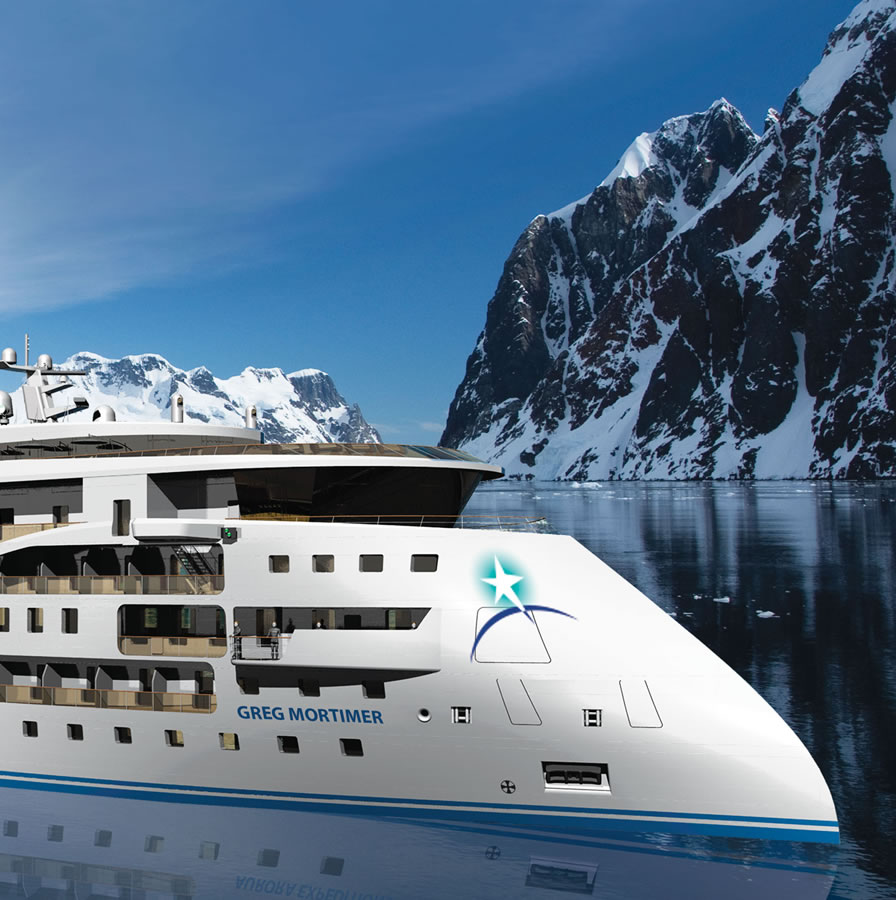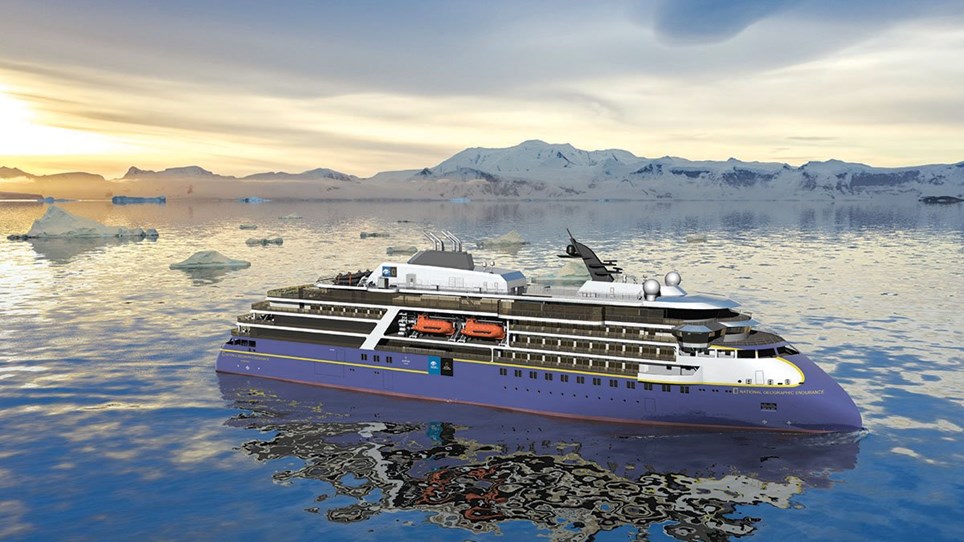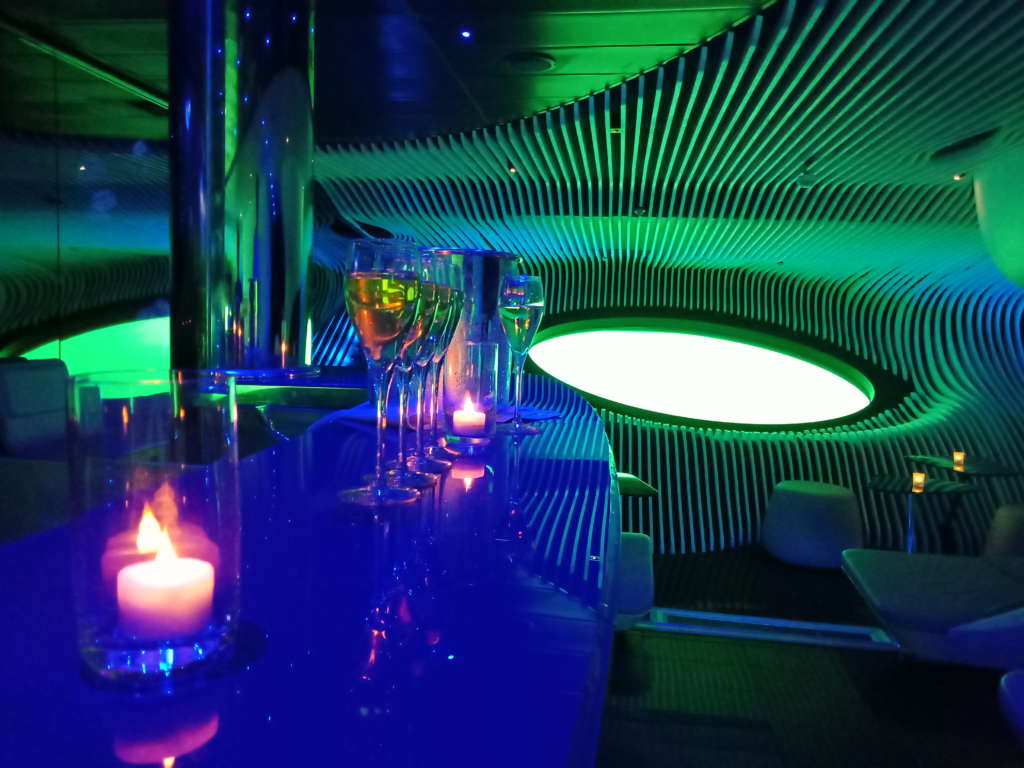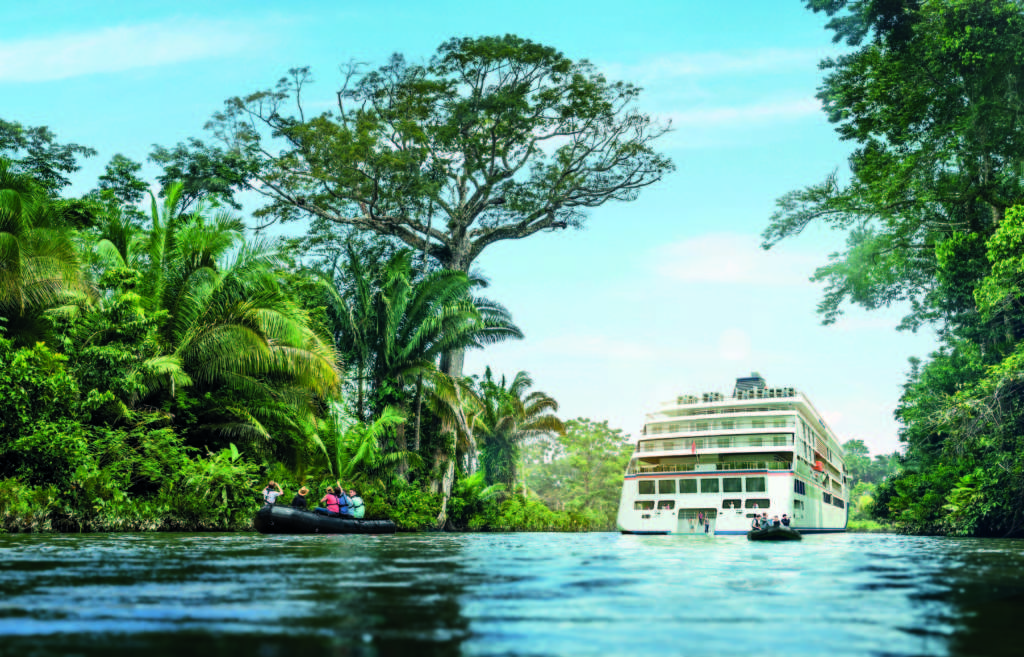Going Green on the High Seas

One of the fastest growing sectors of the cruise industry is expedition cruising, as seasoned cruises search for wilder and more remote places to explore. And to meet this growth, small ship cruise lines are leading the industry in the introduction of new and innovative technology that is changing the face of expedition cruising. As a result, a new wave of exciting, high-tech vessels is about to arrive on the scene that promise to protect the oceans, boost efficiency and make journeys to the farthest corners of the world smoother and more luxurious than ever.
Here are just a few of the amazing new expedition ships which are revolutionising the cruise industry…
Aurora Expeditions – Greg Mortimer
Launching in October 2019 is Aurora Expeditions’ ground-breaking, new, state-of-the-art vessel that also promises to be one of the most advanced expedition ships in the world. Capable of negotiating the strongest winds and waves, using cutting-edge technology, the Greg Mortimer is being built to world-class polar standards and will showcase a novel new ‘X-Bow’ design, which slices waves, cuts spray and delivers a far smoother ride, particularly to Antarctica. The wave-piercing bow has been designed by Norwegian marine engineering company, Ulstein.

Named after one of Aurora’s adventurous founders, the 120-guest, polar-class ship will also boast hydraulic, fold-out platforms for spectacular viewing, new, eco-friendly, anchorless technology which enables the ship to sit still when launching kayaks and Zodiacs without disturbing the sea floor, top-of-the-range Rolls Royce stabilisers and safety mechanisms that allow the ship to maintain operating systems in the event of engine failure.
Australian-based Aurora Expeditions says the Greg Mortimer will offer voyages to the high Arctic, the depths of Antarctica and many other wild, far-flung places that promise adventure and exploration.
* For information on Aurora and Greg Mortimer, click here
Lindblad National Geographic Expeditions – National Geographic Endurance
The unusually shaped ‘X-Bow’ will also prove a striking and effective feature on Lindblad’s National Geographic Endurance, due for launch in 2020. Carrying 126 passengers, the next-generation vessel will be purpose-built for polar navigation with the highest ice class possible. A twin ship has also been announced for 2021.

The ship will also offer a majority of Balcony Cabins as well as underwater video cameras, a video microscope, hydrophones to hear underwater marine life and an innovative Zodiac loading system that will speed up access in remote destinations. If you love nature and want to be immersed in all its glory, ask us about Endurance’s sailings.
The sea-smoothing X-bow is certain to make a splash in coming years so expect to see the design on more expedition ships soon
* For information on Lindblad and National Geographic Endurance, (link coming soon)
Ponant – Le Laperouse
Launched in 2018 and named after an 18th Century French explorer, Ponant’s Le Laperouse is the first of six Explorer-class expedition ships the French line is launching, with another christened last year, two this year and two in 2020. The identical, 184-passenger luxury ships are sleek, elegantly designed vessels offering a subtle blend of refinement, intimacy and comfort while still classed to sail in polar waters.

Built for active exploration and already popular with Australians after time in our waters, Le Laperouse and her sisters have reinforced hulls for polar exploration as well as fleets of Zodiacs and aft marinas for water sports. But the signature feature is the Blue Eye Lounge, an underwater bar area aimed at exposing passengers to marine life. Bathed in deep blue light, the lounge has windows shaped like whale eyes as well as hydrophones, which pipe in the natural symphony of the sea. The sofas also vibrate softly to the sounds and images of sea creatures are projected onto digital screens, creating a unique, multi-sensory experience of life underwater without getting wet!
But Ponant is raising the bar in expedition cruising even further by announcing recently it has ordered the first electric hybrid icebreaking cruise ship powered by liquefied natural gas. The large, 270-guest Le Commandant Charcot, named after a French polar scientist, will be a powerful, polar-classed ship capable of reaching extremely remote polar destinations such as the geographic North Pole! She will take you in luxury to the world’s wildest places from 2021.
* For information on Ponant’s expedition ships, click here
Hapag-Lloyd – Hanseatic Inspiration
Renowned for its first-class ships, Germany’s Hapag-Lloyd cruise line will this year embark on a significant foray into the expedition space with the launch of three identical expedition ships from 2019 to 2021.

One of them – the 199-passenger Hanseatic Inspiration, launching in October, 2019 – will cater for both English and German guests and offer adventures in the Arctic and Antarctica and on the Amazon River and North America’s Great Lakes, with retractable bridge wings enabling the ship to pass through narrow locks. Boasting the highest ice class, Hanseatic Inspiration will inspire its pampered passengers with a retractable glass roof over the pool, a spectacular walkway on the bow offering incomparable views, a retractable glass deck that offers daredevils views of the sea below and panoramic, floor-to-ceiling windows in the forward-facing observation lounge.
* For information on Hanseatic Inspiration, click here
Story by Andrew Mevissen – Peak Media Relations

